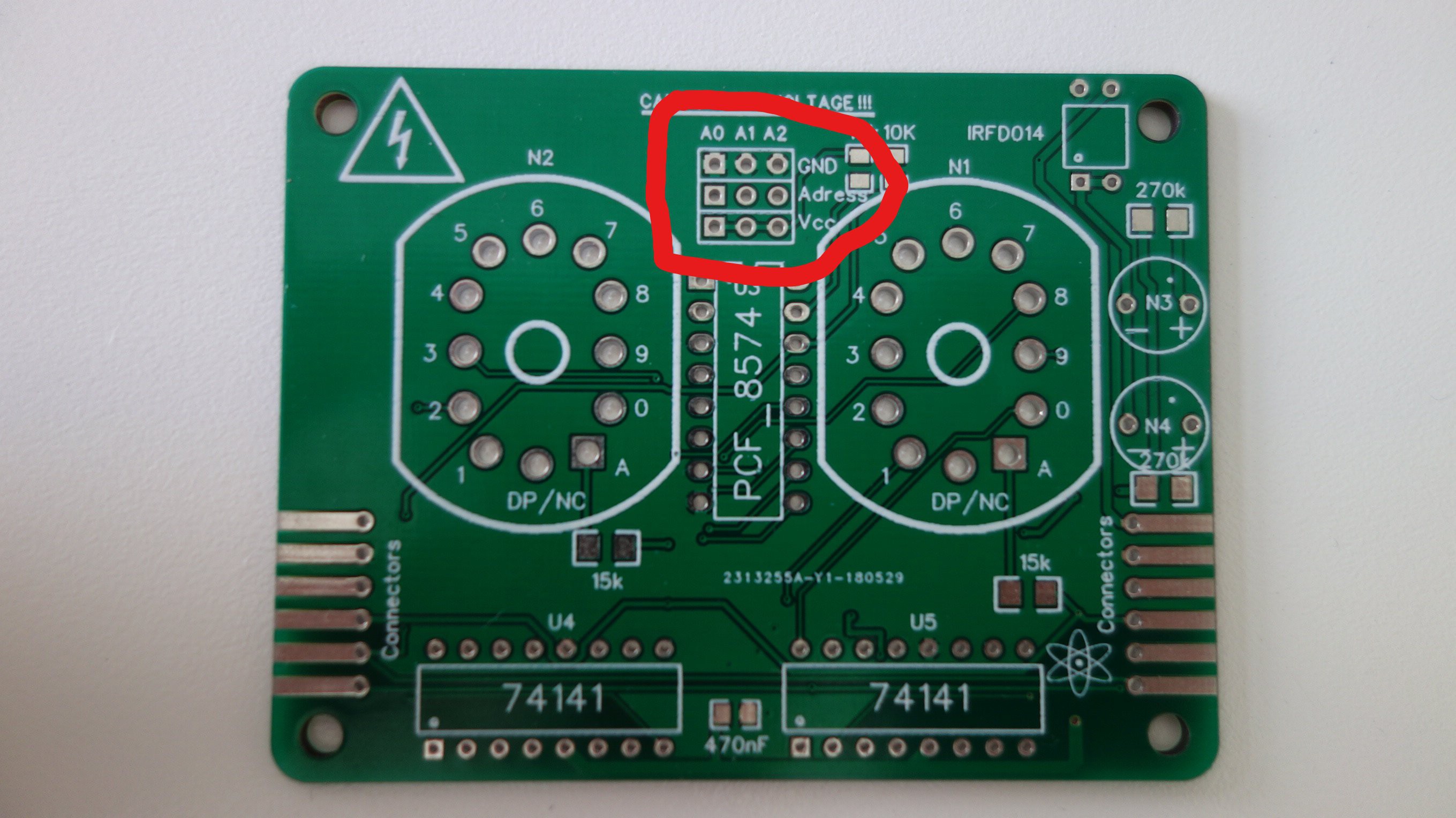-
Update Nr 1
08/13/2018 at 19:05 • 0 commentsAfter a while i can give you some information about the hardware and status of the project:
I had to switch the linear voltage regulator to a low dropout counterpart with the same pinout so i chose the Microchip MCP1825S 3,3 v wich was the only one i´ve found with this pinout so i ordered them which took a while to arrive but now i am able to use the wifi access and everything is working as it should. The Problem was the increased power consumption which lead to a massive voltage drop and this low voltage triggered the so called "brownout detection" which is a safety function which constantly checks the voltage from the power supply and as soon as it drops very low it deactivates the MC beacuse it cant work or at least unreliable anymore.
My next target is to use NTP or a similar service substract the delay caused by the waiting time for the response which is by the way around 2-3 secs and implement some touch buttons and maybe make it possible to set a timer or an alarm via Bluetooth with my phone.
And i made a major mistake with the display PCB because i swiched SCL and SDA by mistake. Furthermore i want to make a PCB without all my errors and without the huge module for the DS3231 so more convenient to solder and use.
As soon as i know that everything works ill publish all PBC with a nice long CC license so you can order them by yourself and build what you want.
I also use a 5v step-down mode module from Pololu. Its a 1A one which is way to much and extremely expensive (nearly 8€) so you should rather use a 300mA- 500mA. You can`t input 12V directly to the LVR at least not in this one, 6V was the maximum. I tried it by accident and it worked for a short period of time but got like 45°C or similar (had no thermometer layin around) and after some time nothing worked because ive sucessfully grilled my LVR :D luckily i ordered 5 pcs so i just replaced it with a new one.
Now i have to rearrange the code a bit so i can use the module and NTP time maybe even implement the european equivalent to the daylight saving (BTW the EU has currently a online poll where you can vote for keeping this system or abolish it)
Ill try to work more on the code but this is my first project which is bigger than using an LED or mosfet or simple stuff like that :/
But any ´way ill upload code and everything with it once i know ive erased all the mistakes and some parts work properly.
-
The ESP32 control unit
07/05/2018 at 14:49 • 0 commentsi used the ESP32 beacuse of all the possibilities it has. But its a little bit more complicated to use it than a simple Atmega/Attiny. You have to shut it down, send him to boot mode while starting and then reset after a sucessful upload to bring it back to the execution mode. And it needs 3.3V to work, which can be aquired by using a linear voltage regualtor and feeding it with 5V (yeah you CAN use higher Voltages but otherwise its getting pretty hot...).
Writing on in a few hours...
-
The Display
07/05/2018 at 14:12 • 0 commentsAs mentioned earlier i used a 8-Bit expander which can be controlled by I2C. This may cause a problem with the adresses because they are all the same and you´d end up with e.g. only the minutes on the display. To solve that problem i added 3x3 array of male pin headers with jumper conectors to connect A0-A2 to Vcc or GND to change the adress for every single expander invidually.
![]()
On the right i added ports and a nice spot for a N-Ch Mosfet to control INS-1 tubes in case you mis something to seperate the numbers. The connectors on the side are pretty smart in my opinion. You can solder them one to the next or use headers to hide the control unit behind the display unit. The resistors are 0805 and the 15k ones are 1206 (you can still solder 0805 on the pads)I added in the edges M3 screwholes in order to mount it permantly to a frame.
-
The idea
07/05/2018 at 13:56 • 0 commentsI started collecting ideas since March. I saw already the other nixie display on Hackaday.io but it used a component i wasnt able to get in germany so deided to do it with an Arduino Micro or similar. But this idea was pretty soon destroyed by the fact that i needed 16 GPIOs for my 4 drivers. In the end i decided to use PCF8574 8-Bit GPIO expander to drive two Nixies per expander.
I2C Nixie Display w/ Clock
Its a Universal Nixie Display with I2C driven by A ESP32 WROOM and time by DS3231
